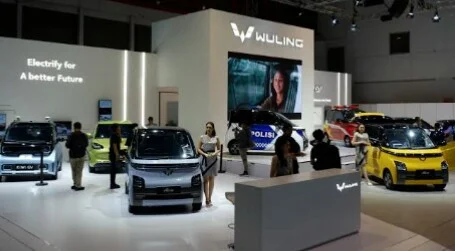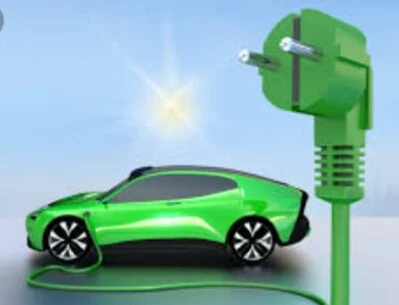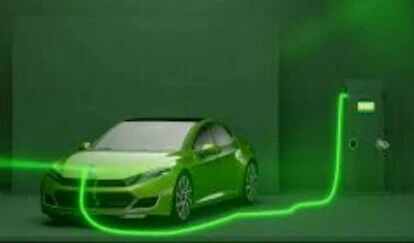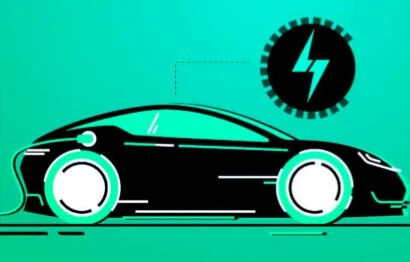Electric Vehicle
Introduction Hybrid Electric Vehicles
In recent years, the automotive industry has witnessed a significant shift towards greener and more sustainable transportation solutions. Among the most prominent players in this transformation are hybrid electric vehicles (HEVs).
Combining the best features of traditional internal combustion engines (ICEs) with the efficiency of electric motors, HEVs have emerged as a promising alternative to conventional gasoline-powered cars. This article explores the concept, advantages, and future prospects of hybrid electric vehicles.
Hybrid Electric Vehicle (HEV) Specifications
| Feature | HEV Type | Specification |
|---|---|---|
| Powertrain | Parallel | Combines a gasoline engine and an electric motor, working together to power the vehicle. |
| Battery | Nickel-metal hydride or lithium-ion | Smaller than in pure electric vehicles, typically used for short-distance driving or regenerative braking. |
| Transmission | Planetary gearset or continuously variable transmission (CVT) | Allows for seamless switching between electric and gasoline power. |
| Driving Modes | EV, Hybrid, Engine | Offers different modes for optimizing fuel efficiency or performance. |
| Regenerative Braking | Yes | Captures kinetic energy during braking and stores it in the battery. |
| Fuel Efficiency | Higher than traditional gasoline cars | Varies depending on driving conditions and usage patterns. |
| Range | Limited by gasoline tank capacity | Can travel longer distances than pure electric vehicles. |
| Emissions | Lower than traditional gasoline cars | Still produce emissions, but in smaller quantities. |
| Cost | Higher than traditional gasoline cars, but lower than pure electric vehicles | Varies depending on the model and features. |
| Examples | Toyota Prius, Honda Accord Hybrid, Ford Escape Hybrid | Many popular car models offer hybrid options. |
Note: These specifications are general and may vary depending on the specific HEV model.
Understanding Hybrid Electric Vehicles
EVs employ a regenerative braking system that converts the kinetic energy generated during deceleration into electrical energy, which is stored in a battery pack. This energy is later used to power the electric motor and assist the internal combustion engine during acceleration and other high-demand scenarios.
Advantages of Hybrid Electric Vehicle
1. Fuel Efficiency: HEVs deliver significantly better fuel economy compared to conventional vehicles. By relying on the electric motor's power during low-speed city driving, HEVs reduce fuel consumption and greenhouse gas emissions. This aspect is particularly advantageous in stop-and-go traffic and urban environments.
2. Reduced Emissions: Hybrid electric vehicles produce fewer tailpipe emissions than conventional cars. The electric motor's assistance allows for smoother and more efficient operation of the internal combustion engine, resulting in lower overall emissions. Consequently, HEVs contribute to improving air quality and mitigating climate change.
3. Extended Range: Unlike all-electric vehicles (EVs) that rely solely on battery power, HEVs can rely on their internal combustion engine when the battery charge is depleted. This hybrid architecture eliminates the range anxiety often associated with fully electric vehicles, making HEVs more practical for long-distance travel.
4. Regenerative Braking: HEVs employ regenerative braking, which recovers energy that is typically wasted as heat during deceleration. By converting this energy into electricity and storing it in the battery, HEVs improve overall energy efficiency and reduce wear on traditional braking systems.
5. Infrastructure Compatibility: HEVs can be fueled at traditional gas stations, eliminating the need for a specialized charging infrastructure required by all-electric vehicles. This convenience allows for a smoother transition to electric mobility without relying solely on extensive charging infrastructure development.
Future Prospects for Hybrid Electric Vehicle
The future of hybrid electric vehicles looks promising. As the automotive industry continues its transition towards electrification, hybrid technology serves as an important stepping stone.
HEVs bridge the gap between conventional ICE vehicles and fully electric cars by providing improved efficiency and reduced emissions while maintaining the convenience of conventional refueling methods. Furthermore, technological advancements and increased demand are driving innovation in hybrid powertrains, leading to more sophisticated and capable hybrid systems.
Hybrid electric vehicles are also expected to benefit from improvements in battery technology. As battery energy density increases, HEVs will be able to operate in electric-only mode for longer periods, further reducing their reliance on internal combustion engines. Additionally, the growth of renewable energy sources and the expanding availability of charging infrastructure will likely enhance the appeal of fully electric vehicles.
Nevertheless, HEVs will continue to play a vital role in the automotive landscape, offering a balanced solution that combines the benefits of both electric and internal combustion technologies.
New Technology for Hybrid Electric Vehicle
Here's an explanation of the new terms related to Hybrid Electric Vehicles (HEVs):
1. Plug-in Hybrid Electric Vehicles (PHEVs): PHEVs are a type of hybrid electric vehicle that can be charged from an external power source, typically an electric outlet. They have both an internal combustion engine and an electric motor, allowing them to operate on electricity alone for a certain distance before switching to the internal combustion engine or combining both for extended driving ranges.
2. Extended Range Electric Vehicles (EREVs): EREVs are a subtype of PHEVs that primarily operate on electric power, with the internal combustion engine serving as a generator to recharge the battery when it depletes its electric range. This arrangement enables longer all-electric driving without range anxiety.
3. Hybrid Electric Powertrains: This term refers to the combination of an internal combustion engine and one or more electric motors working together to power the vehicle. The powertrain can be configured in various ways, such as parallel, series, or series-parallel, depending on the specific hybrid system.
4. Micro Hybrid Electric Vehicles: Micro Hybrids are a mild hybrid vehicle variant that uses start-stop technology to automatically shut off the engine when the vehicle is idle and restart it when the driver engages the accelerator. They use regenerative braking to capture and store energy to assist the engine during acceleration.
5. Mild Hybrid Electric Vehicles: Mild Hybrids have an electric motor that assists the internal combustion engine but cannot propel the vehicle on its own. The electric motor provides additional power during acceleration and allows the engine to operate more efficiently, reducing fuel consumption.
6. Full Electric Drive Hybrid Vehicles: This term refers to a hybrid system where both the front and rear axles are powered by electric motors, providing an all-wheel-drive capability. This arrangement can be found in some high-performance hybrid vehicles.
7. Range-Extended Hybrid Vehicles: These vehicles have an onboard generator, usually powered by a small internal combustion engine, that provides electricity to the electric motor when the battery is depleted. It effectively extends the electric driving range without the need for external charging.
8. Integrated Starter-Generator Systems (ISG): ISGs are electric motors that serve as both the vehicle's starter (for internal combustion engines) and as a generator to charge the battery in hybrid systems.
9. Electrically Assisted Turbocharging (EAT): This technology utilizes an electric motor to drive the turbocharger, enhancing its performance and responsiveness, resulting in improved engine efficiency and reduced emissions.
10. Hybrid Energy Storage Systems: These systems combine different types of energy storage technologies, such as lithium-ion batteries, ultracapacitors, or flywheels, to optimize power delivery, efficiency, and energy regeneration in hybrid vehicles.
Company who utilizes New Technology for Hybrid electric
Here are some notable companies that were at the forefront of developing and implementing new technology in HEVs:
1. Toyota: Toyota is a pioneer in hybrid electric vehicle technology and is known for its Prius, one of the first mass-produced hybrid vehicles. Toyota has continuously improved its hybrid systems and expanded its hybrid lineup across various models.
2. Honda: Honda has been a strong competitor in the hybrid market with its hybrid models like the Honda Insight and Honda Accord Hybrid. They have been developing advanced hybrid systems to improve fuel efficiency and reduce emissions.
3. Hyundai / Kia: Hyundai and its sister brand Kia have been making significant strides in hybrid technology, introducing hybrid versions of popular models like the Hyundai Ioniq and Kia Niro. They have also explored plug-in hybrid and full electric options.
4. Ford: Ford has been actively developing hybrid technology for several of its models, including the Ford Fusion Hybrid and the Ford Escape Hybrid. They have also ventured into plug-in hybrid electric vehicles (PHEVs) with models like the Ford C-Max Energi.
5. BMW: BMW has been known for its "eDrive" technology, offering plug-in hybrid versions of various models like the BMW i8 and BMW 3 Series. They have also expanded their electric vehicle lineup under the BMW i sub-brand.
6. Volvo: Volvo has been committed to electrification, and their hybrid offerings include the Volvo XC60 and XC90 plug-in hybrid models. They have set ambitious goals to transition to fully electric vehicles in the future.
7. Mercedes-Benz: Mercedes-Benz has been investing in hybrid technology and offers various hybrid models across their lineup, including the E-Class and S-Class plug-in hybrid variants.
8. Nissan: While Nissan is well-known for its all-electric Leaf, they have also ventured into hybrid technology with models like the Nissan Rogue Hybrid and the Nissan Pathfinder Hybrid.
9. Chevrolet: Chevrolet has explored hybrid technology in its lineup, offering hybrid versions of some of its popular models like the Chevrolet Malibu Hybrid and Chevrolet Silverado Hybrid.
10. Lexus: Lexus, the luxury division of Toyota, has been incorporating hybrid technology into many of its vehicles, with models like the Lexus ES Hybrid and Lexus RX Hybrid.
Hybrid Electric Vehicle Market Penetration
Best Seller Hybrid Electric Vehicle
The best-selling hybrid electric vehicle (HEV) models and their market shares can vary from region to region and are subject to change over time.
The popularity of hybrid vehicles can be influenced by factors such as government incentives, consumer preferences, environmental awareness, and automaker strategies.
At that time, some of the best-selling hybrid electric vehicle models globally included:
1. Toyota Prius: The Toyota Prius has long been one of the best-selling hybrid vehicles worldwide. It is a compact hybrid car known for its fuel efficiency and innovative hybrid technology.
2. Toyota RAV4 Hybrid: The Toyota RAV4 Hybrid, a hybrid version of the popular RAV4 SUV, had been gaining popularity for its combination of fuel efficiency and practicality.
3. Toyota Camry Hybrid: The Toyota Camry Hybrid, a hybrid variant of the Camry sedan, was also among the top-selling hybrid vehicles, offering a blend of comfort and efficiency.
4. Honda Insight: The Honda Insight is a hybrid sedan that has garnered attention for its sleek design and excellent fuel economy.
5. Ford Escape Hybrid: The Ford Escape Hybrid, a hybrid version of the Escape SUV, was well-received for its utility and efficiency.
6. Lexus RX Hybrid: The Lexus RX Hybrid, a luxury hybrid SUV, had been popular among consumers seeking a more premium hybrid experience.
Global Outlook of Hybrid Electric Vehicle
Hybrid electric vehicles have emerged as a promising solution to address the challenges of conventional gasoline-powered vehicles.
By combining the best features of electric and internal combustion engines, HEVs offer improved fuel efficiency, reduced emissions, extended range, and compatibility with existing infrastructure. As the automotive industry advances towards a greener future, hybrid technology acts as a crucial transitionary phase. With ongoing advancements and increased investment in hybrid electric vehicle technology, we can expect further improvements in performance, efficiency, and affordability.
Governments and regulatory bodies around the world are also actively promoting the adoption of hybrid electric vehicles as part of their strategies to reduce carbon emissions and combat climate change.
Incentives such as tax credits, rebates, and subsidies are often provided to encourage consumers to choose hybrid vehicles.
These measures, combined with growing environmental consciousness among consumers, are driving the demand for HEVs.
Automakers are responding to this demand by investing heavily in research and development to enhance hybrid technology. They are exploring innovative approaches, such as plug-in hybrid electric vehicles (PHEVs) that offer extended electric-only driving range by using larger battery packs that can be charged externally. This allows users to maximize their electric driving while still benefiting from the extended range provided by the internal combustion engine.
Furthermore, the integration of advanced technologies such as artificial intelligence, machine learning, and connectivity features is transforming the driving experience in hybrid electric vehicles. Intelligent energy management systems optimize power distribution between the engine and electric motor, based on real-time data such as driving conditions, traffic patterns, and battery charge level. This dynamic control ensures optimal efficiency and performance, making HEVs even more appealing to consumers.
In terms of commercial applications, hybrid electric technology is finding its way into various sectors beyond passenger cars. Hybrid buses are becoming increasingly common in public transportation systems, reducing emissions and noise pollution in urban areas. Delivery and logistics companies are also adopting hybrid electric trucks to improve fuel efficiency and reduce operating costs while meeting environmental regulations.
Conclusion Hybrid Electric Vehicles
Hybrid electric vehicles are playing a significant role in the transition to a sustainable and greener future in the automotive industry.
With their improved fuel efficiency, reduced emissions, extended range, and compatibility with existing infrastructure, HEVs provide a practical and viable solution for consumers seeking a balance between electric and internal combustion technologies.
As technology continues to evolve and investments in hybrid technology increase, we can expect further advancements, making hybrid electric vehicles even more efficient, affordable, and appealing to a wider range of consumers.
The era of hybrid electric vehicles is here to stay, and they will continue to contribute to a cleaner and more sustainable transportation landscape.







